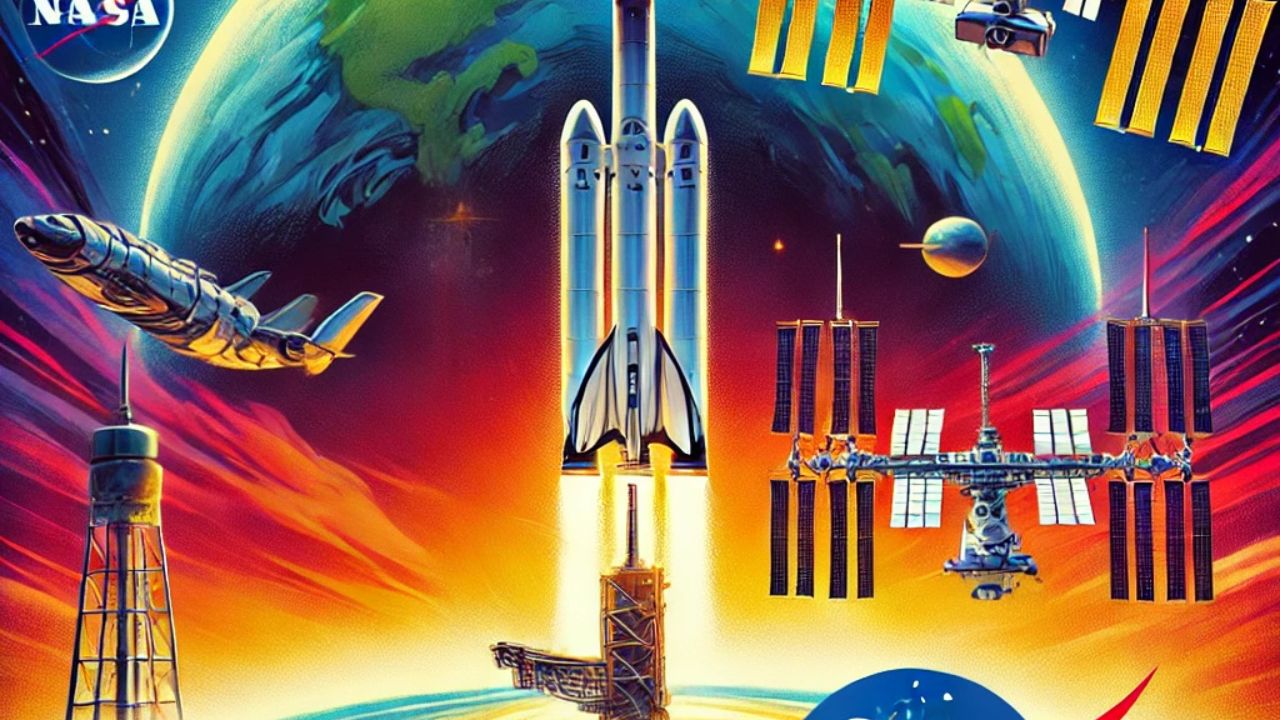Introduction
NASA has announced that media accreditation is now open for the upcoming resupply mission to the International Space Station (ISS). This mission, the 21st Northrop Grumman commercial resupply services mission, will deliver crucial NASA science investigations, supplies, and equipment to the ISS. The mission is set to launch aboard a SpaceX Falcon 9 rocket in early August from the Space Launch Complex 40 at Cape Canaveral Space Force Station in Florida. This collaborative effort between NASA, Northrop Grumman, and SpaceX marks another significant step in advancing scientific research and exploration in space

Media Accreditation Details
U.S. media personnel interested in covering the prelaunch and launch activities are invited to apply for accreditation. The deadline for U.S. citizens to submit their applications is Friday, July 19, at 11:59 p.m. EDT. All accreditation requests must be submitted online. Upon approval, credentialed media will receive a confirmation email. The media accreditation policy and the application form are available on NASA’s official website. For further questions about accreditation or special logistical support, media representatives can contact NASA’s Kennedy Space Center newsroom.
Launch and Docking Procedure
The Cygnus spacecraft, carried by the SpaceX Falcon 9 rocket, will be launched from Cape Canaveral Space Force Station. After reaching the ISS, the space station’s robotic arm, Canadarm2, will grapple the Cygnus spacecraft. It will then be attached to the Unity module’s Earth-facing port for cargo unloading. This meticulous process ensures the safe delivery of essential supplies and scientific equipment to the ISS crew.
Scientific Investigations and Cargo
Each resupply mission to the ISS is a significant opportunity to deliver a wide array of scientific investigations in various fields such as biology, biotechnology, Earth and space science, physical sciences, and technology development. This mission is no exception. Alongside the usual food, supplies, and equipment, Cygnus will deliver research materials including supplies for a new STEMonstration, which is designed to inspire and educate students in science, technology, engineering, and mathematics (STEM).
Additionally, the spacecraft will carry several test articles to observe water flow in microgravity. One of the most anticipated investigations aboard is the study of vascularized liver tissue, which could provide critical insights into liver function and diseases. Another key investigation involves a bioreactor to demonstrate the production of blood and immune stem cells in microgravity. These studies aim to advance biomanufacturing techniques that could lead to higher quality treatments for medical conditions on Earth.
CubeSat Launch Initiative
NASA’s CubeSat Launch Initiative is also part of this mission. Two CubeSats, CySat-1 from Iowa State University and DORA from Arizona State University, will be deployed from the ISS. These nanosatellites are part of the Educational Launch of Nanosatellites (ELaNa 52) mission. CubeSats offer unique opportunities for educational institutions to conduct scientific investigations and technology demonstrations in space, contributing to the development of the next generation of scientists and engineers.
International Space Station: A Hub of Continuous Human Presence and Research
Since November 2000, the ISS has been continuously occupied by international crews. Over the past two decades, 280 people from 21 countries have visited this orbital laboratory, conducting numerous scientific experiments that have broadened our understanding of space and its effects on various biological and physical processes. The ISS serves as a critical springboard for NASA’s future exploration missions, including the Artemis program, which aims to return humans to the Moon and ultimately enable human exploration of Mars.
Significance of Commercial Resupply Missions
The collaboration with commercial partners like Northrop Grumman and SpaceX is vital for NASA’s missions. These partnerships not only facilitate the delivery of essential supplies and equipment but also enhance NASA’s capacity to conduct new scientific investigations in space. The involvement of commercial entities in resupply missions ensures a robust and reliable supply chain, enabling continuous scientific research and technological advancements aboard the ISS.
Future Prospects and Exploration Goals
The ISS is an integral part of NASA’s long-term exploration goals. The data and experience gained from experiments conducted on the ISS are instrumental in preparing for future missions to the Moon and Mars. The Artemis program, which plans to land the first woman and the next man on the Moon by the mid-2020s, will utilize the ISS as a testing ground for new technologies and procedures. These missions will pave the way for sustained human exploration of Mars, addressing key challenges such as long-duration space travel, life support systems, and human health in space.
Conclusion
The upcoming Northrop Grumman’s 21st resupply mission to the ISS, facilitated by a SpaceX Falcon 9 rocket, underscores the collaborative efforts between NASA and its commercial partners. This mission is a testament to the ongoing commitment to advancing scientific research and exploration. As media accreditation opens, the world eagerly anticipates the valuable scientific contributions that will stem from this mission, furthering our quest to explore and understand the universe.
For more information about NASA’s commercial resupply missions and updates on the upcoming launch, interested individuals can visit NASA’s official website.
Read More
- 5 Best Smart Motorcycle Helmets 2023
- NASA GOLD Mission Discovers Surprising Alphabetical Shapes
- NASA Perseverance Team Revives SHERLOC Instrument, Advancing Search for Ancient
- NASA Perseverance Rover Discovers Unusually Light-Colored Boulder on Mars:










